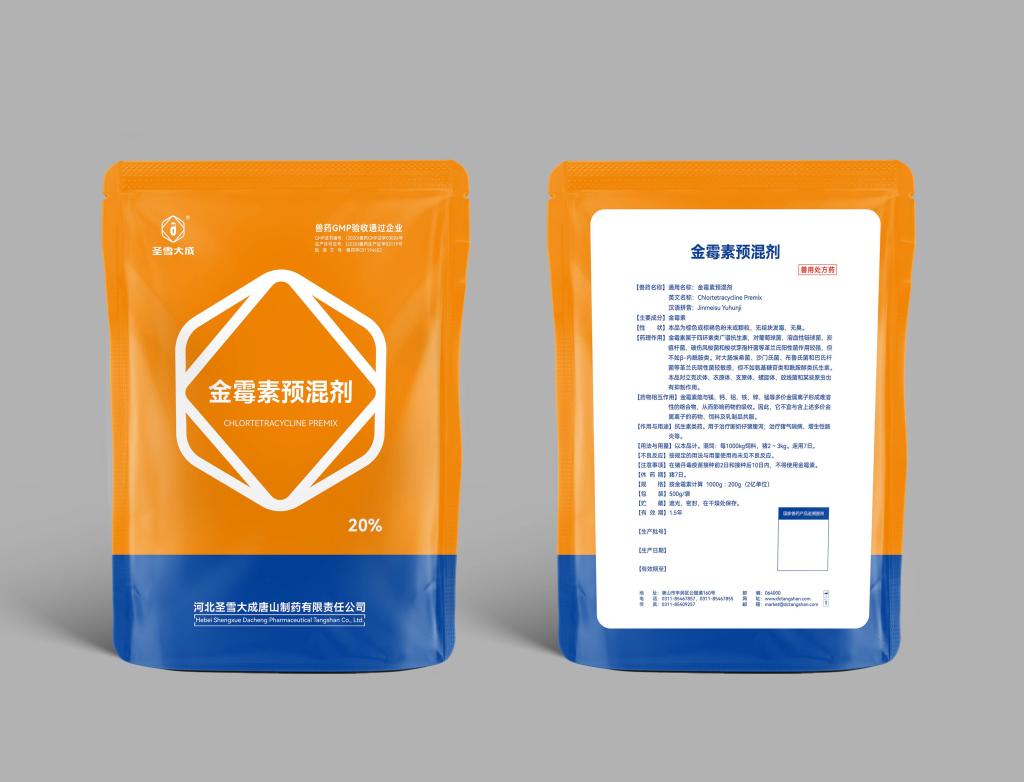Tel:+8618231198596

News
 CONTACT
CONTACT
 CONTACT
CONTACT
- Linkman:Linda Yao
- Tel: +8618231198596
- Email:linda.yao@dcpharma.cn
- Linkman:CHARLES.WANG
- Department:Overseas
- Tel: 0086 0311-85537378 0086 0311-85539701
News
The role of Chlortetracycline Premix in supporting animal immune function and disease resistance.
TIME:2024-06-07
Understanding Chlortetracycline
Mechanisms of Action:
Chlortetracycline belongs to the tetracycline class of antibiotics and acts by inhibiting bacterial protein synthesis.
Its bacteriostatic activity targets a wide range of bacterial pathogens, including both Gram-positive and Gram-negative bacteria commonly associated with respiratory, gastrointestinal, and reproductive tract infections in animals.
Veterinary Applications:
Chlortetracycline is available in various formulations, including premixes, water-soluble powders, and injectable solutions, making it suitable for use in different animal species and production systems.
It is commonly used for the treatment, control, and prevention of bacterial diseases in livestock, poultry, and aquaculture.
Immune Modulation by Chlortetracycline Premix
Enhancement of Innate Immunity:
Chlortetracycline premix modulates innate immune responses by influencing the production and activity of immune cells such as macrophages, neutrophils, and natural killer cells.
It promotes phagocytosis, cytokine production, and oxidative burst activity, enhancing the ability of immune cells to recognize and eliminate pathogens.
Regulation of Inflammatory Responses:
Chlortetracycline premix exerts anti-inflammatory effects by inhibiting the production of pro-inflammatory mediators such as cytokines, chemokines, and prostaglandins.
Its ability to suppress excessive inflammation helps mitigate tissue damage and inflammation-associated pathology during infection.
Applications in Animal Health Management
Disease Prevention and Control:
Prophylactic use of chlortetracycline premix helps prevent and control bacterial infections in animals, reducing the incidence and severity of disease outbreaks.
By bolstering immune function and enhancing disease resistance, chlortetracycline premix contributes to overall herd health and productivity.
Stress Management:
Chlortetracycline premix supports animals' ability to cope with stressors such as transportation, handling, and environmental changes.
Stress-induced immunosuppression compromises animals' immune function and increases their susceptibility to infections, highlighting the importance of immune support in stress management strategies.
Implications for Sustainable Livestock Production
Reduced Antibiotic Dependency:
Effective disease prevention and immune support provided by chlortetracycline premix reduce the reliance on therapeutic antibiotics and antimicrobial treatments in animal agriculture.
By promoting a healthy immune system and reducing the burden of infectious diseases, chlortetracycline premix contributes to sustainable antibiotic stewardship practices.
Improved Animal Welfare and Productivity:
Animals with robust immune function are better equipped to resist pathogens, recover from infections, and maintain overall health and welfare.
Enhanced disease resistance translates to improved growth rates, reproductive performance, and production efficiency, benefiting both animals and producers in terms of economic viability and sustainability.
Challenges and Considerations
Antimicrobial Resistance:
Prolonged or indiscriminate use of chlortetracycline and other antibiotics can contribute to the development of antimicrobial resistance in bacterial pathogens.
Responsible antibiotic use practices, including judicious prescribing, adherence to withdrawal periods, and alternative control measures, are essential for addressing the challenge of antimicrobial resistance.
Regulatory Oversight and Compliance:
Regulatory agencies play a critical role in overseeing the use of chlortetracycline and other antibiotics in veterinary medicine to ensure compliance with safety and efficacy standards.
Monitoring programs assess antibiotic residues in animal products and monitor trends in antimicrobial resistance to inform regulatory decisions and policy actions.
Conclusion
Chlortetracycline premix serves as a valuable tool in supporting animal immune function and enhancing disease resistance in livestock and poultry. Through its immunomodulatory effects and broad-spectrum antimicrobial activity, chlortetracycline premix contributes to disease prevention, stress management, and sustainable livestock production. However, responsible antibiotic use practices, regulatory oversight, and industry collaboration are essential for mitigating the risks of antimicrobial resistance and ensuring the long-term effectiveness of chlortetracycline premix in animal health management.
- Tel:+8618231198596
- Whatsapp:18231198596
- Chat With Skype







